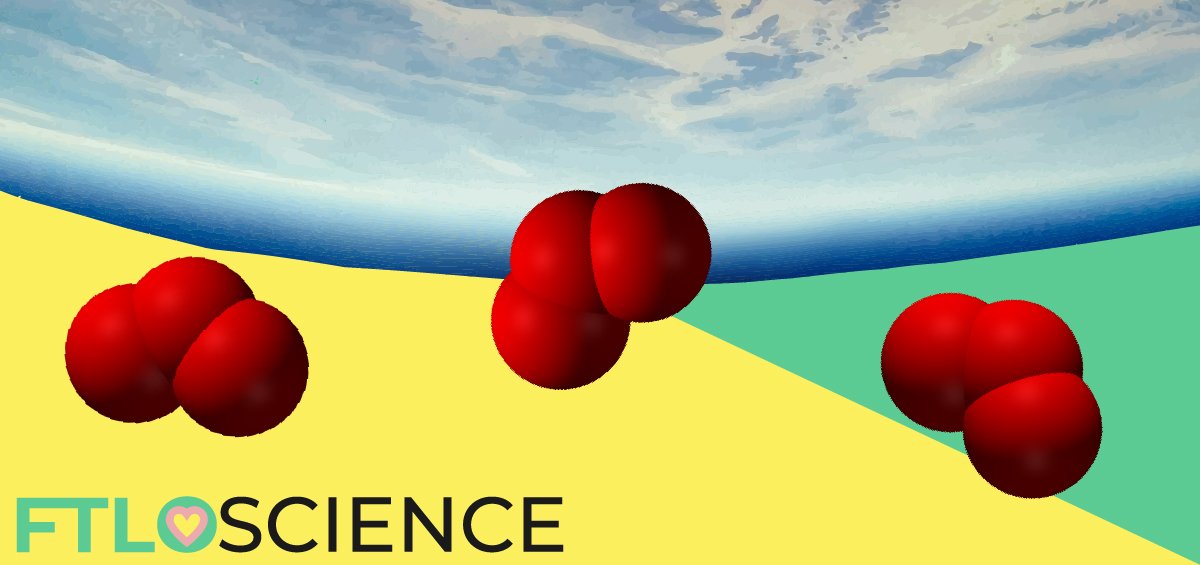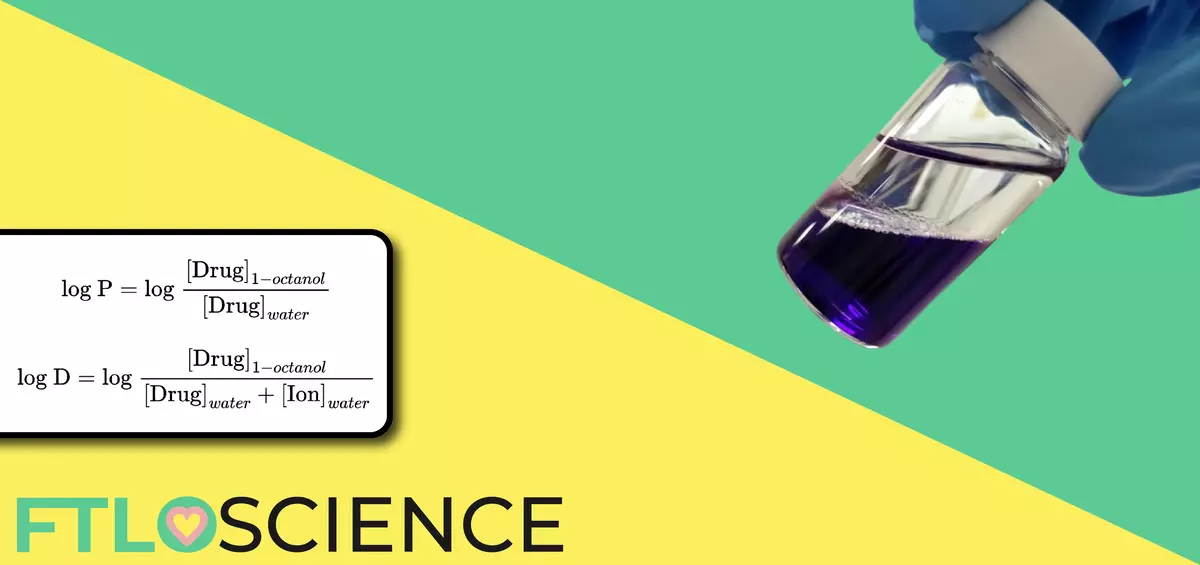In 1985, British scientists Joe Farman, Jon Shanklin
What is Ozone?
Chemistry of Ozone
Ozone is a triatomic molecule that resides in the stratosphere (~20km above ground level), at concentrations of around 10 parts per million (ppm)1. Ozone doesn’t exactly form a ‘layer’ per se but rather refers to a sufficient amount of ozone that surrounds the upper levels of Earth’s atmosphere. Hence, the loss of ozone doesn’t create a ‘hole’, but the terminology becomes useful when explaining the issue to the general public.
Ozone can absorb UV-B radiation (light with wavelengths of ~300 nm), which is otherwise harmful to humans. DNA in our cells absorbs UV-B, causing irreversible damage to its structure and our instructions for life. Since normal replication cannot occur, this damage results in the growth of cancers and cataracts. This is why sunscreen is so important!
Another consequence of UV radiation reaching the surface of Earth is the loss of overall function in plants. Excess UV-B causes premature aging in plants, known as senescence, which coincides with a drop in photosynthesis levels.

The Chapman Cycle
In the 1930s, Sydney Chapman suggested a mechanism that accounted for the natural cycling of ozone in the stratosphere, now known as the Chapman cycle2. At this altitude, the unfiltered light from the sun provides a shorter wavelength, higher energy, ultraviolet (UV) light. This energy is high enough to initiate ozone chemistry, by splitting dimolecular oxygen into unimolecular oxygen (a ‘free radical‘):
Initiation: O2 + hv (light) → O + O
This unimolecular oxygen radical (O) is unstable, quickly reacting with another molecule of oxygen (O2) to form ozone (O3).
Formation: O2 + O → O3
Ozone formed in this way can be split by UV radiation to reform oxygen, completing the cycle.
Depletion: O3 + hv → O2 + O
The unstable oxygen radical can also react with a molecule of ozone, thereby terminating the cycle by forming 2 oxygen molecules. However, due to the higher concentration of O2 compared to O3, it is more likely that ozone formation occurs.
Termination: O3 + O → 2O2
External Catalysts in Ozone Chemistry
Ozone Heroes
In the 1960s, scientists Molina, Rowland

These halogens are usually found in their ‘inactive’
Ozone Chemistry in the Antarctic
In the cold, dark winter months, polar vortexes form above the South pole. This mass of cold, isolated air coincides with the
ClONO2 + H2O → HOCl + HNO3
ClONO2 + HCl → Cl2 + HNO3
It is important to note that ClONO2 and HCl are chlorine ‘sinks’ that are, initially, fairly stable. While HOCl and Cl2 are less stable, they too do not react under these conditions. When spring and sunshine come along, however, the UV radiation provides the energy to split them:
HOCl + hv → HO + Cl
Cl2 + hv → Cl + Cl
Thus, huge quantities of chlorine radicals are suddenly free to react with ozone. Note that the reactions are catalytic, meaning ClO and Cl reform and can react again:
Cl + O3 → ClO + O2
ClO + O → Cl + O2
Overall: O3 + O → 2O2
When summer arrives, the ice particles melt, releasing trapped NO2 molecules. These then react with chlorine oxides (ClO), capturing them as ClONO2 and terminating the catalytic cycle. Thus the ozone ‘hole’ closes a little in the summer, but it was clear that a steady decrease, year on year, was occurring.
Chlorine in the Stratosphere
But where did this chlorine come from? Chlorine can be found in nature; some plants and deep-sea bacteria produce chlorine-containing products such as methyl chloride, but this could not explain the rapid destruction of ozone.
Invented in the 1930s, chlorofluorocarbons (CFCs) were widely used as refrigerants and aerosols due to their chemical stability and low cost. In the 70s, scientists (including Molina and Rowland) made the link between CFCs and their catalytic destruction of ozone4.
CFCs molecules consist of a carbon center, with fluorine and chlorine substituents. CFC-12, for example, has the chemical formula CF2Cl2. Since C-F and C-Cl bonds are stable, they are able to persist for long periods in the atmosphere. Once they reach the stratosphere, however, UV radiation causes chlorine to dissociate. In the case of CFC-12, it releases 2 Cl molecules:
CF2Cl2 + hv → CF2Cl + Cl
CF2Cl + hv → CF2 + Cl
These chlorine atoms can undergo the reactions highlighted above, destroying ozone catalytically. The reception to their theory was lukewarm, however, with industry critics particularly keen to poke holes in it.
The breakthrough came in
Current State of the Ozone Layer
Though the Montreal protocol is now in full effect, models predict that ozone recovery rates should be faster. Reports suggest new production of CFCs may be happening illegally, especially in developing countries. The concentration of CFC-11 (CCl3F) has been increasing by 25% per year since 2012, suggesting that it is unrelated to past production6.
CFC-11 is useful in the production of rigid polyurethane foam, used in construction. It dissolves in the reactants and helps its expansion, also being safe and fire resistant. 18 out of 25 polyurethane manufacturing companies across China openly admitted to CFC-11 use.
While the Montreal Protocol is still the most successful environmental treaty, the ozone in our stratosphere is still at risk. The persistence of ozone-depleting substances remains a global problem, one which holds many lessons for humanity as we face the larger picture of global climate change.
Reference
- Cicerone, R. J. (1987). Changes in stratospheric ozone. Science, 237(4810), 35-42.
- Harvey, E., & Sweeney, R. (1999). Modeling Stratospheric Ozone Kinetics, Part I. Journal of Chemical Education, 76(9), 1309.
- Molina, M. J., & Rowland, F. S. (1974). Stratospheric sink for chlorofluoromethanes: chlorine
atom-catalysed destruction of ozone. Nature, 249(5460), 810. - Rowland, F. S., & Molina, M. J. (1975). Chlorofluoromethanes in the environment. Reviews of Geophysics, 13(1), 1-35.
- Farman, J. C., Gardiner, B. G., & Shanklin, J. D. (1985). Large losses of total ozone in Antarctica reveal seasonal ClOx/NOx interaction. Nature, 315(6016), 207.
- Montzka, S. A., Dutton, G. S., Yu, P., Ray, E., Portmann, R. W., Daniel, J. S., … & Nance, J. D. (2018). An unexpected and persistent increase in global emissions of ozone-depleting CFC-11. Nature, 557(7705), 413.
About the Author

Sean is a consultant for clients in the pharmaceutical industry and is an associate lecturer at La Trobe University, where unfortunate undergrads are subject to his ramblings on chemistry and pharmacology.




